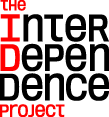
Theme: Emptiness
Paired with a vajra, the tantric bell, or ghanta in Sanskrit, is one of the most common ritual implements found throughout Himalayan Buddhism and represents wisdom. Functionally, the bell can be used as an offering of sound or a call for protection. Symbolically, the hollowness of the bell’s dome creates a visual representation of emptiness which Buddhism teaches as fundamental to the nature of all phenomena. It is this specific wisdom of emptiness that according to Buddhism is essential in producing enlightenment.
Image credit: Five-prong Bell & Dorje Set, Urga or Dolonor (Mongolia), ca. late 19th century; silver, metal (Li, five metal compound); Rubin Museum of Art, C2014.7.4a-b
Mindfulness Meditation Series
Himalayan practitioners have, for centuries, used meditation to quiet the mind, open the heart, calm the nervous system, and increase one’s ability to focus. Now, western scientists, business leaders, and the secular world have embraced meditation as a vital tool for brain health. Learn more
Presented in partnership with Sharon Salzberg and the Interdependence Project.


About the Speaker
Ethan Nichtern founded the Interdependence Project in 2005. In the summer of 2010 he was empowered by his teacher, Sakyong Mipham Rinpoche, as a Shastri, a senior teacher in the Shambhala tradition, representing the New York region. Nichtern teaches meditation and Buddhist psychology classes and retreats in New York City and throughout the United States. He is the author of The Road Home: A Contemporary Exploration of the Buddhist Path, the novella/poetry collection Your Emoticons Won’t Save You, and One City: A Declaration of Interdependence.
